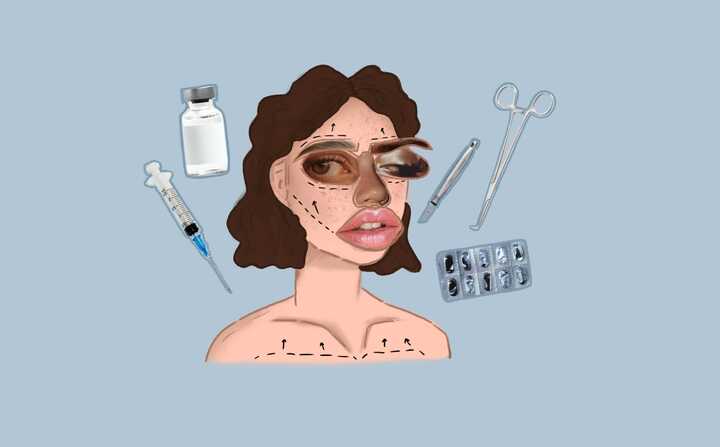Pain is all I felt after being elbowed in the face during a wrestling match. My nose was broken pretty badly, but in retrospect, my broken nose was minor compared to the surgery I had two years later.
I did not take the decision to have the surgery lightly, but it was ultimately necessary due to the structural damage to my nose. As I could not breathe properly, I was advised to take a reconstructive rhinoplasty— essentially a regular rhinoplasty, but covered by insurance because it was necessary. After doing extensive research, I visited the best surgeon in my area and followed almost everything review and videos on TikTok, I chose to go under the knife like so many other Americans. So, in early July, I had surgery.
I wouldn’t describe the recovery as necessarily painful—I was given a lot of medication. However, it was incredibly uncomfortable.
Coming home from surgery, I was out of it. The cast around my nose took over the entire middle part of my face. I felt so weird that I ended up going straight home and falling asleep. However, I never fell into deep sleep because I had to wake up to take pills every few hours. The next day I couldn’t eat because I felt nauseous. My mouth and throat were incredibly dry. But the worst was the swelling. By the end of two days, my face had swollen to the point where I could barely form words and open my eyes.
While going through all this pain, I couldn’t help but wonder: who would choose to do this? Why would anyone selectively spend thousands of dollars to go through all that pain when they could breathe just fine?
The answer? More than 1.1 million people who had rhinoplasty in 2023, which is huge 26% increase. in surgeries of the previous year. In fact, the number of cosmetic procedures as a whole has increased 19% since 2019. I blame social media.
Social media is expert at creating issues where none exist, especially when it comes to a woman’s appearance. In recent years, women’s natural noses have come into the limelight and are labeled as a “theme”. And with this new issue a solution is proposed: surgery. A “simple” solution that promises satisfaction. However, this is not the case for many who decide to go under the knife.
Almost 15% of rhinoplasty is a second or third rhinoplasty, meaning that a shocking number of people continue to be unhappy with their nose after their first operation and are forced to have another done in an attempt to achieve satisfactory results. This is an alarming statistic given that the complication rate for rhinoplasty is anywhere in between 4 and 18%. Statistics vary, but it’s important to recognize that complications do occur with any procedure where general anesthesia is used, but this is often brushed under the rug online.
No one would want to spend thousands of dollars and suffer pain unless they were conditioned to feel less than perfect. As a young person, I have seen many people around me fall victim to the standards set by social media, especially young women. I know it will continue to make young girls feel insecure. Even when people undergo surgery, they still feel inadequate because social media standards of the “ideal body” are constantly changing. Unless you’re literally struggling to breathe, I don’t think rhinoplasty is worth it. If the insurance does not pay, the cost does not exceed the complications. If you don’t feel any discomfort at the thought of someone knocking you out and ripping your face open, surgery isn’t worth it. Repair should not be surgery. You should stay off social media and learn to love your body – not for what it looks like, but for the fact that it keeps you alive.
To be clear, I have nothing against people who choose to have plastic surgery. Nor will I ever judge anyone for that choice. I just despise a culture that makes people (especially young women) think they have to go under the knife and look a certain way. I also disagree with the popularization of such extreme solutions to insecurities. Because that’s what plastic surgery is: an extreme solution that is downplayed and sold to a young audience as an easy fix to their “flaws.” And social media can’t convince me otherwise.
So learn to love the little bump on your nose.


